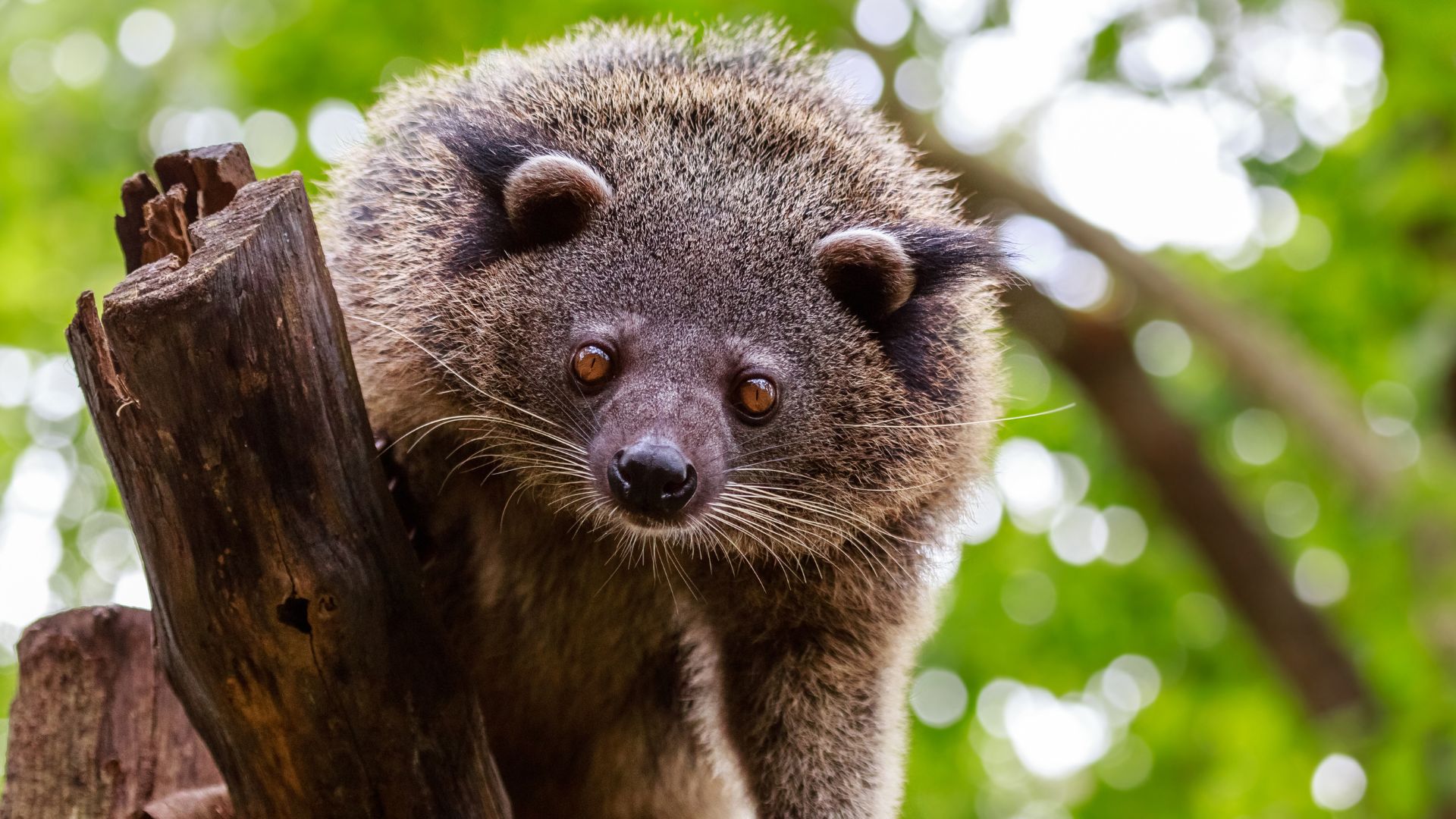Have you ever heard of a binturong? No? Don’t worry, you’re not alone. It sounds like the name of a mystical jungle creature, and honestly, that’s not too far off.
Also known as the “bearcat,” this animal is neither a bear nor a cat but an oddball bundle of fur, whiskers, and charm that calls the treetops of Southeast Asia home.
This fascinating, tree-dwelling wonder is so unique it deserves the spotlight, and today, we’re shining it bright. Oh, and did I mention it smells like buttered popcorn? Yes, popcorn.
Stick around because you’re about to learn some amazing and quirky facts about one of the most peculiar animals on the planet!
1. Unique Smell Of Popcorn

Picture this: you’re strolling through a dense jungle, surrounded by towering trees and rustling leaves, when suddenly, you catch a whiff of… popcorn? Nope, there’s no snack stand hidden somewhere. That’s the binturong’s signature scent!
These fluffy creatures smell like freshly buttered popcorn thanks to a chemical compound called 2-acetyl-1-pyrroline. And no, they’re not walking popcorn factories. It’s all about marking territory.
When they rub their popcorn-scented goodness on branches and leaves, they’re marking their territory to signal ownership and keep others away. This unique trait also acts like a calling card, helping them recognize each other in the dense jungle.
It’s as if every binturong has its own personal popcorn cologne. Who knew being territorial could smell so snack-worthy?
2. Not A Bear Or A Cat
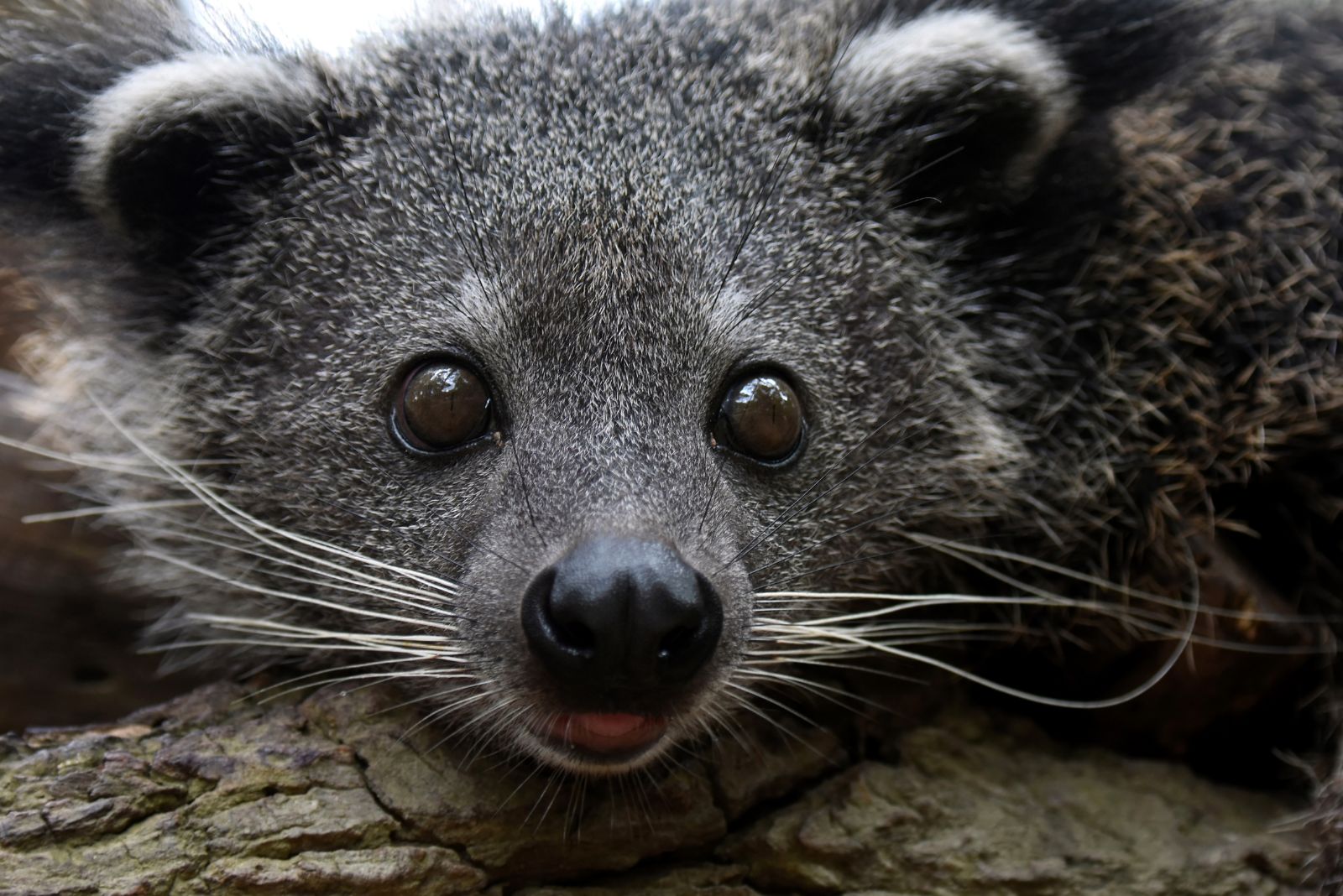
Let’s clear up one of the biggest animal identity crises in the jungle: binturongs, also called “bearcats,” are neither bears nor cats. Confused yet? You’re not alone.
Imagine nature took a fluffy bear cub, added a dash of raccoon mischief, sprinkled in some cat-like whiskers. The result is the wonderfully quirky binturong.
Despite their nickname, they’re actually part of the Viverridae family, making them closer relatives to civets and genets than to your favorite feline or a cuddly bear.
Their thick, shaggy fur and stocky bodies might make the “bear” part of their name seem legit, while their whiskers and purring habits hint at their “cat” side.
And let’s face it, “fluffy civet raccoon” doesn’t quite have the same catchy ring as “bearcat.” They’re basically nature’s way of keeping us guessing.
3. Omnivorous Diet
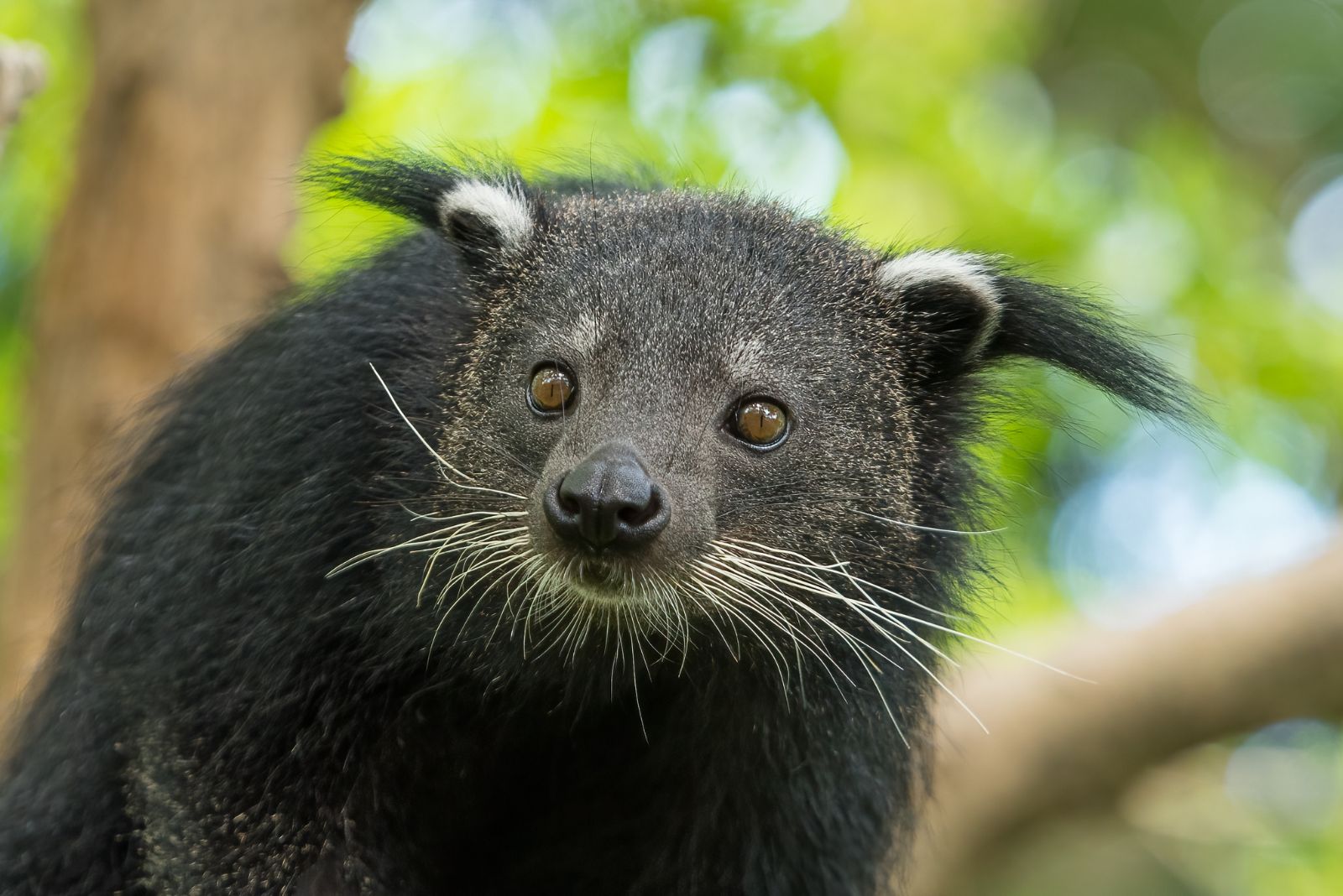
When it comes to adventurous eaters, binturongs take the crown. Their diet is as varied as it is intriguing, making them true culinary explorers of the animal world.
Fruits, insects, small animals, bird eggs – binturongs have a diverse and adventurous palate, making them true jungle foodies. Among all their snacks, figs are their absolute favorite. These sweet, juicy fruits are not only a treat for binturongs but also a key part of their role in the ecosystem. As they eat figs and later disperse the seeds, they help forests thrive and regenerate.
Their eating habits go beyond just satisfying hunger: they contribute to maintaining the balance and biodiversity of their habitat. With their eco-friendly appetite and love for variety, binturongs play a vital part in keeping the jungle lush and green.
4. Slow And Stealthy
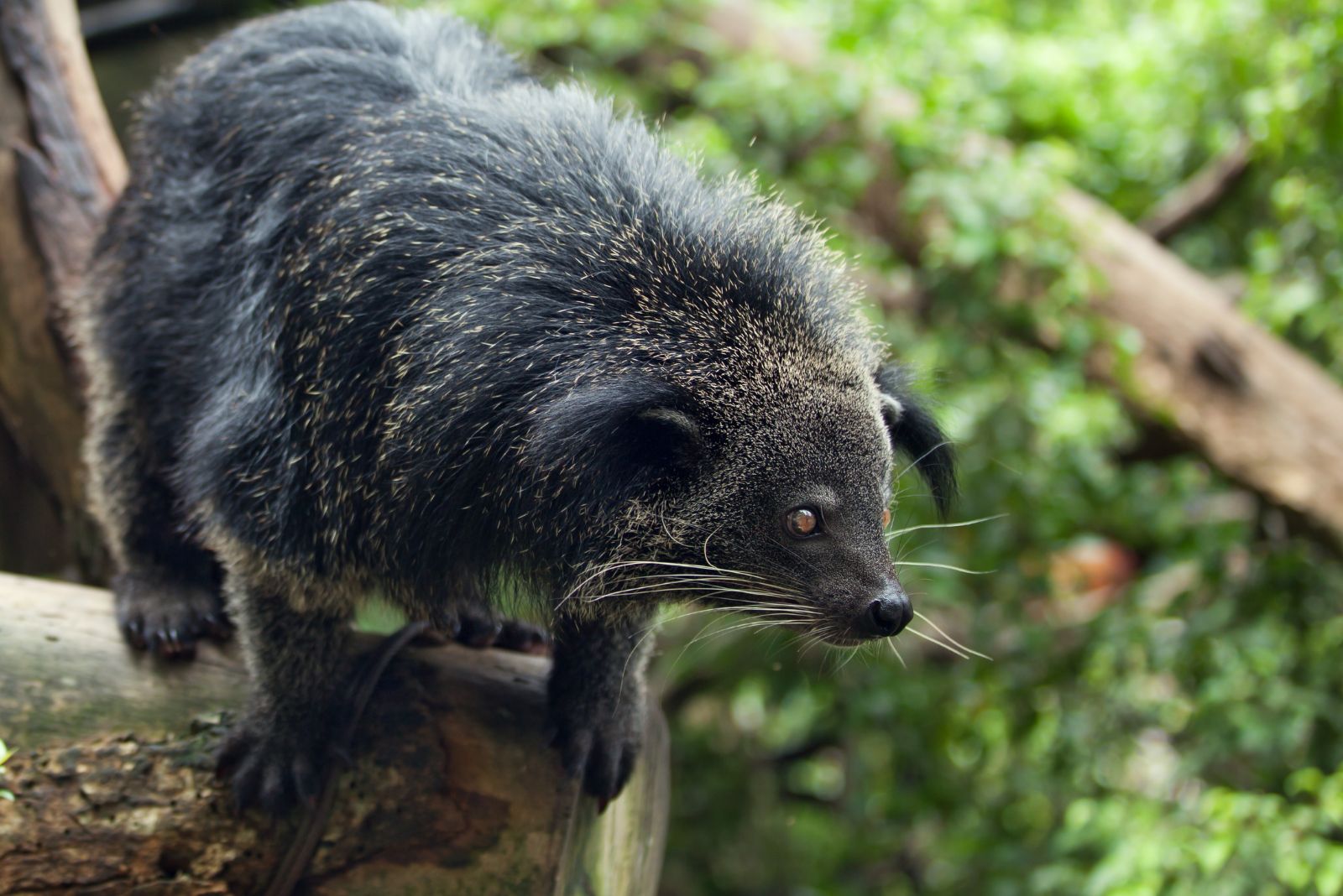
In a jungle packed with sprinters, jumpers, and high-speed predators, binturongs are the calm, calculated climbers of the treetops.
Their slow, deliberate movements resemble a carefully choreographed dance, allowing them to move stealthily, avoid predators, and sneak up on unsuspecting prey.
This sluggish pace is far from laziness: it’s a clever survival strategy that makes them masters of the canopy. With their prehensile tails and sharp claws, they’re perfectly equipped for life among the branches.
Sometimes, taking life one slow step at a time is the smartest move of all.
5. Nocturnal Lifestyle
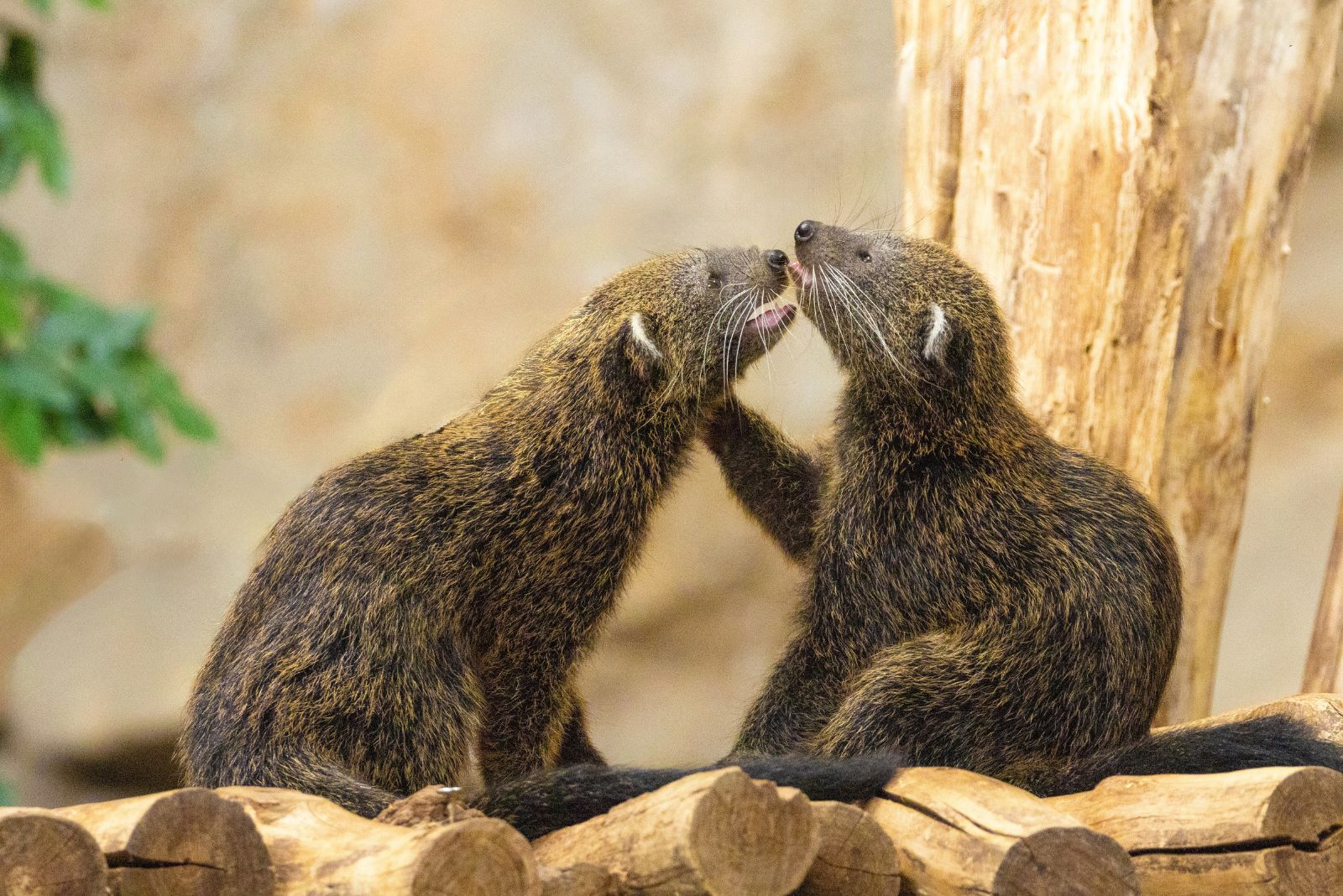
If binturongs had a favorite time of day, it would definitely be night. These creatures are the ultimate night owls, or night bearcats, if you will.
While the rest of the jungle is snoozing, binturongs are wide awake, ready to prowl the treetops in search of snacks. During the day, they’re professional nappers, often sprawled out on branches like they’ve had one too many late nights.
But as the sun sets, they flip the switch. Their sharp senses help them navigate the dark, whether they’re sniffing out ripe fruit or stealthily hunting small prey.
Being nocturnal also has its perks, it lets them avoid competing with daytime predators for food and space.
It’s like they’ve figured out the perfect schedule: sleep all day, party (or forage) all night.
6. Communicate Through Scent And Sounds
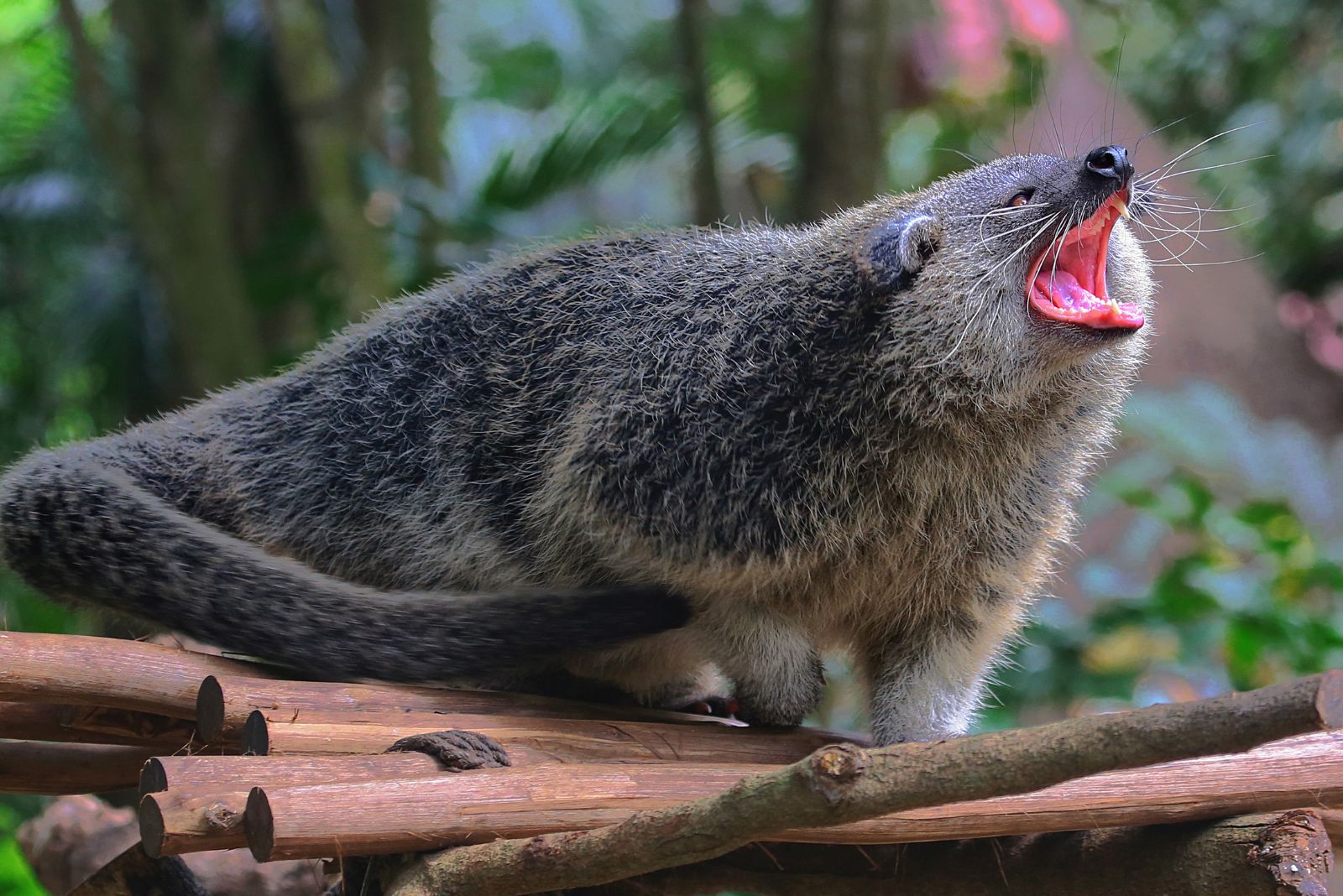
Binturongs are the original multi-lingual communicators of the jungle. Forget plain old talking, they use a mix of smells and sounds to get their point across.
That popcorn scent they’re famous for isn’t just a fun quirk. It’s their way of leaving a scented note to mark their territory and signal their presence.
But their communication skills don’t stop at scent, they’re also quite the chatterboxes. From growls to chuckles to purrs, they’ve got a whole soundboard of vocalizations. Feeling content? They might purr like a cat. Feeling threatened? A low growl will do the trick.
It’s like they’re running their own jungle podcast, complete with sound effects and signature smells. Honestly, who wouldn’t want to tune into that?
7. Climbing Experts
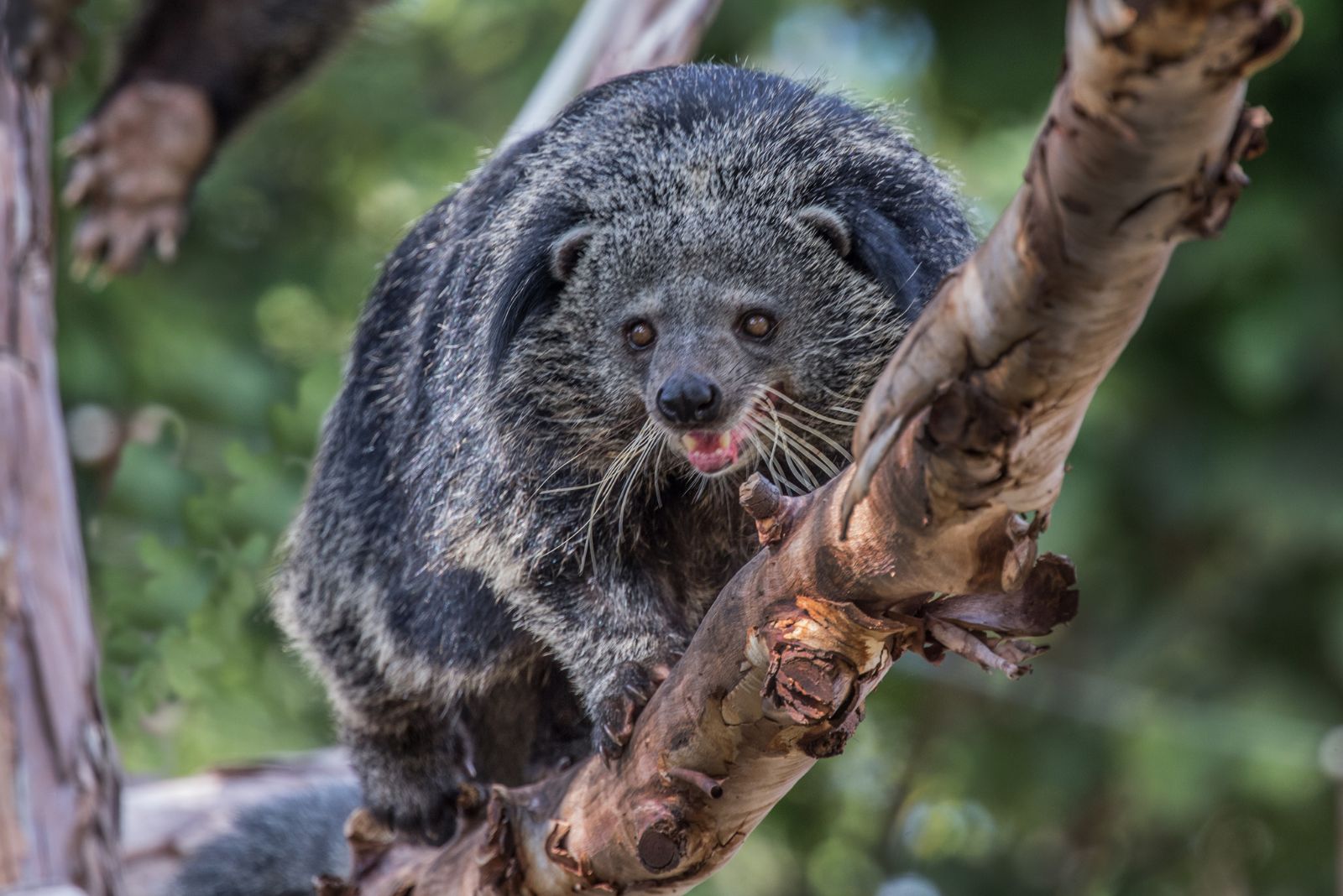
With their flexible tails and sharp claws, these skilled climbers are built for a life in the treetops. Their tails act like an extra limb, gripping branches with precision, while their claws provide the perfect support for climbing and balancing.
They spend so much time in the canopy that the forest floor might as well be a foreign land. Their movements are deliberate and graceful, allowing them to navigate even the trickiest branches with ease.
This tree-dwelling lifestyle isn’t just about staying active, it’s a smart strategy to avoid predators and snack on the tastiest fruit hidden high above.
If there were a jungle Olympics for climbing, they’d take the gold every single time.
8. Vital For Forest Ecosystems
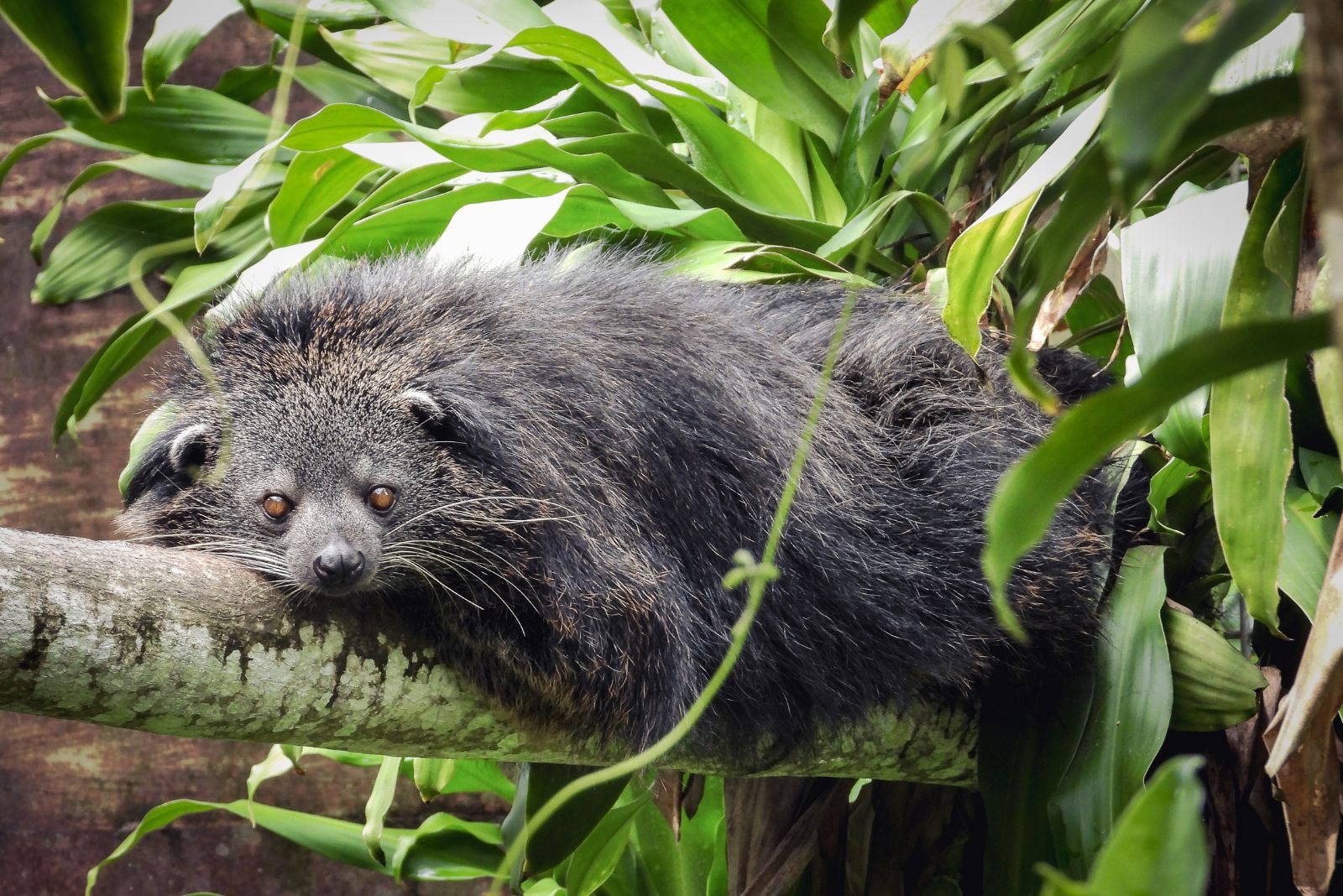
Who knew binturongs were low-key environmental superheroes? These furry creatures have a key role in the jungle ecosystem, thanks to their love of fruit – especially figs.
When they chow down on their favorite snack, they’re helping the forest thrive. How? By depositing seeds as they roam, they’re essentially planting new trees wherever they go.
Without them, some tree species would struggle to spread, and that could throw the entire ecosystem out of balance. So, while they might not wear capes, binturongs are quietly saving the rainforest one fig at a time.
The next time you see a lush, vibrant jungle, just remember there’s a good chance a binturong helped make it happen.
9. Endangered Status
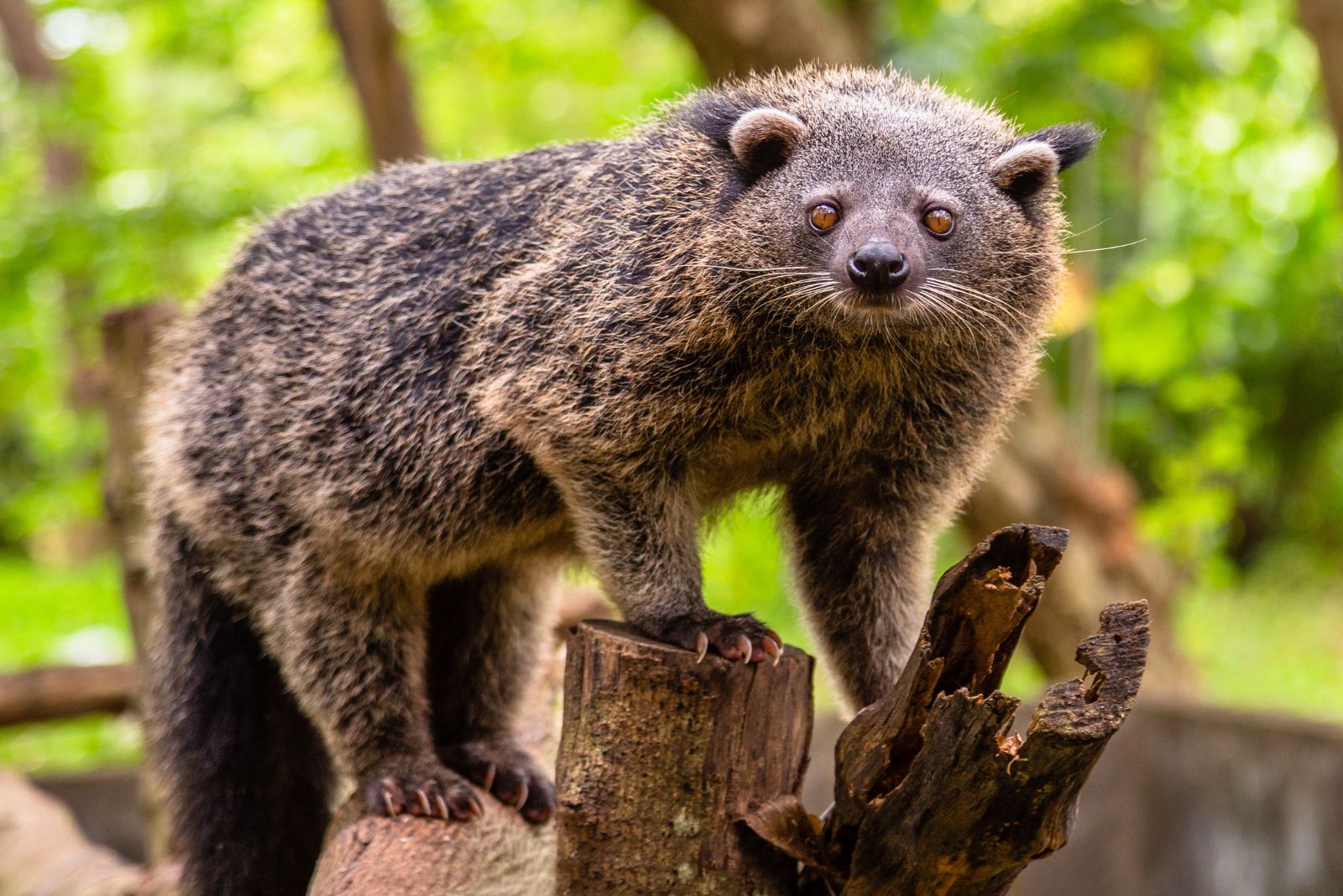
Despite their popcorn-scented charm and jungle-saving habits, binturongs are in trouble.
Habitat loss from deforestation and hunting has caused their numbers to drop significantly. In some areas, they’re hunted for their fur or sold as exotic pets, adding to their challenges. Can you imagine a world without them?
Thankfully, conservationists are stepping in, working tirelessly to protect their habitats and educate communities about their ecological importance.
These fascinating animals deserve a future where they can thrive, roaming the treetops and continuing their vital role in the jungle’s delicate balance.
Every effort to save them brings us closer to preserving the rich biodiversity they represent.
10. Rarely Seen In The Wild
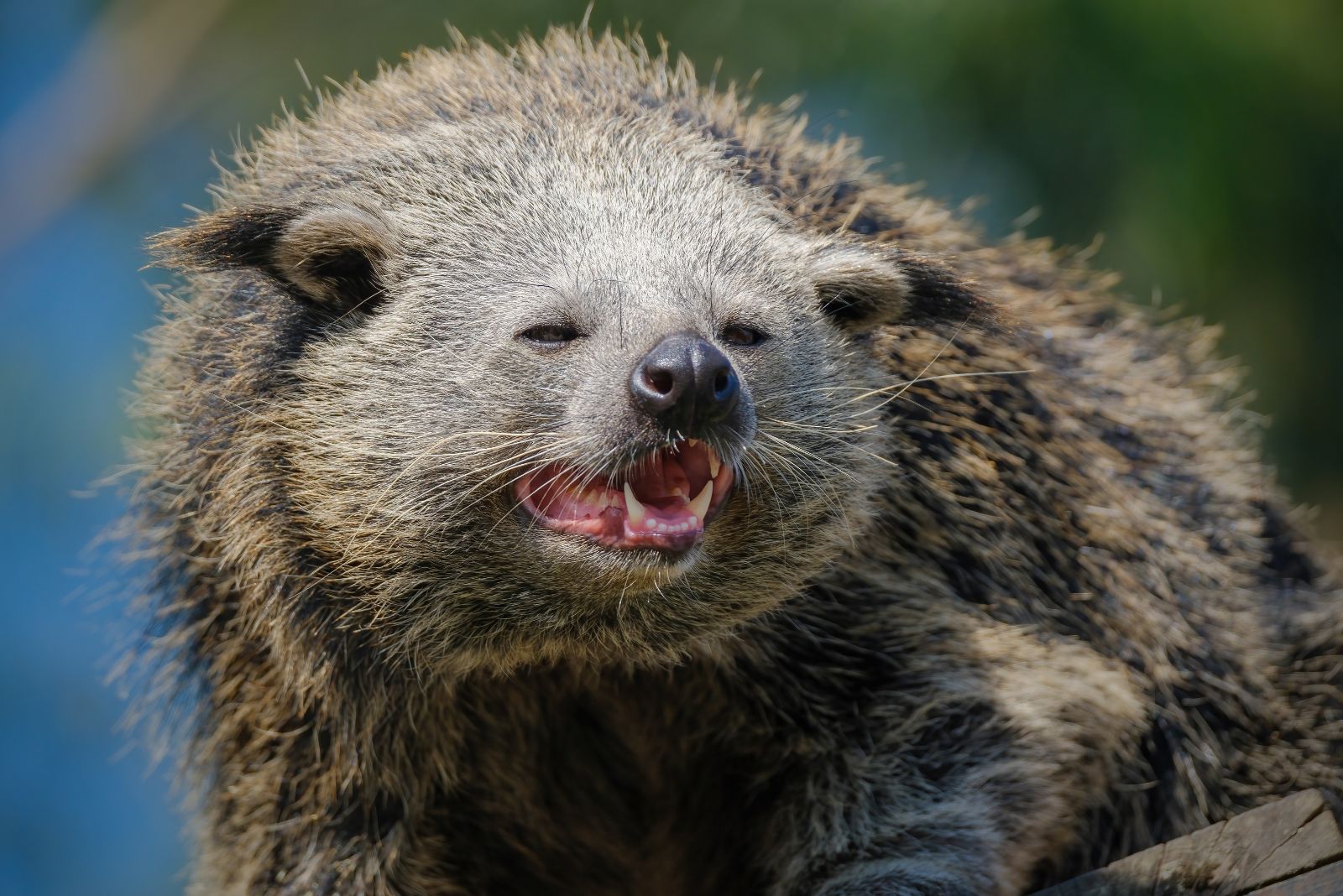
Spotting a binturong in the wild is like finding a needle in a very leafy haystack. These elusive creatures spend most of their time high up in the trees, blending in with the dense jungle canopy.
Add their nocturnal habits to the mix, and they become even harder to find. For most people, the best chance to see a binturong is at a zoo or wildlife sanctuary, where they can be admired up close.
But in the wild, they’re like the jungle’s best-kept secret: quiet, mysterious, and oh-so-intriguing. If you ever do spot one, consider it your lucky day – it’s a moment worth cherishing.

